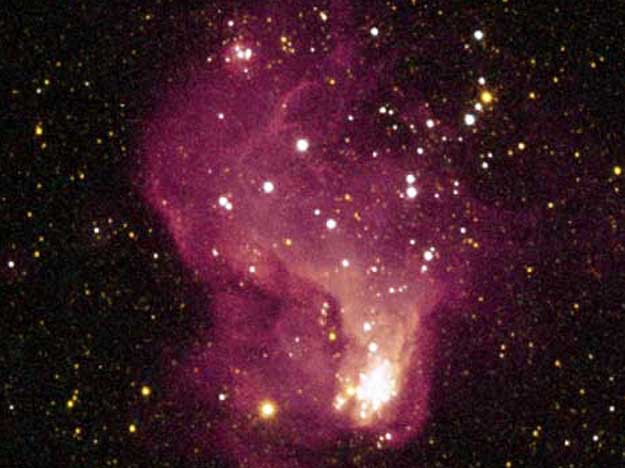
|
Credit & Copyright: C. R. O'Dell
(Vanderbilt)
et al.,
L. Bianchi
(JHU)
et al.,
Hubble Heritage Team,
NASA
Explanation:
How did stars form in the early universe?
Astronomers are gaining insight by studying
NGC 6822, a nearby galaxy classified as
irregular by modern standards but appearing more typical of
galaxies billions of years ago.
Inspection of NGC 6822 shows several bright star groups,
including two dubbed
Hubble-X and Hubble-V.
Pictured above, the
Hubble Space Telescope has resolved
Hubble V into the energetic stars
that are lighting up the surrounding gas.
Each star in the central dense knot of
Hubble V shines brighter than 100,000
Suns.
The Hubble V gas cloud spans about 200
light years and lies about 1.5 million light-years away toward the
constellation
Sagittarius.
|
January February March April May June July August September October November December |
| |||||||||||||||||||||||||||||||||||||||||||||||||||||||
NASA Web Site Statements, Warnings, and Disclaimers
NASA Official: Jay Norris. Specific rights apply.
A service of: LHEA at NASA / GSFC
& Michigan Tech. U.
Based on Astronomy Picture
Of the Day
Publications with keywords: Hubble V - NGC 6822 - star formation
Publications with words: Hubble V - NGC 6822 - star formation
See also:
